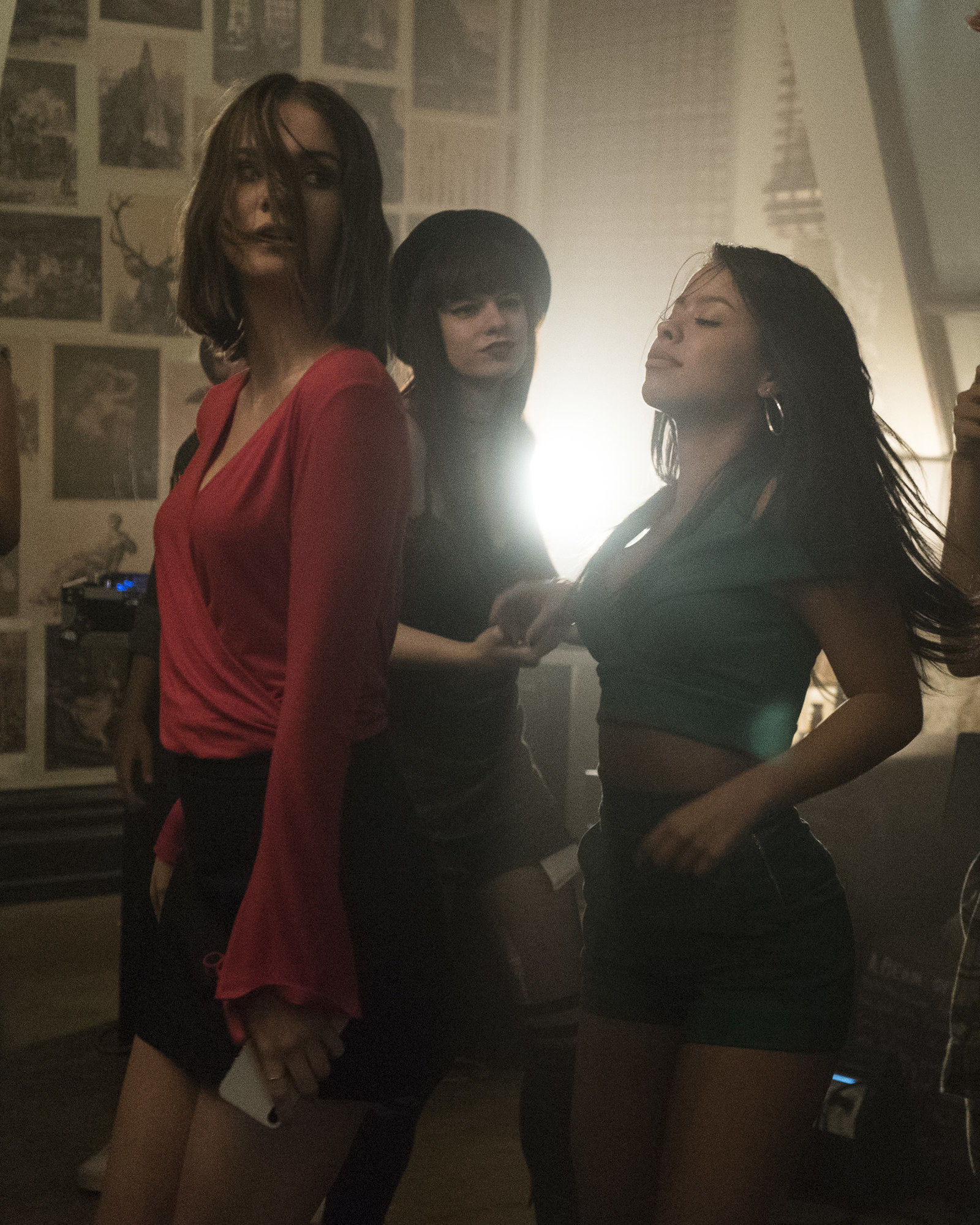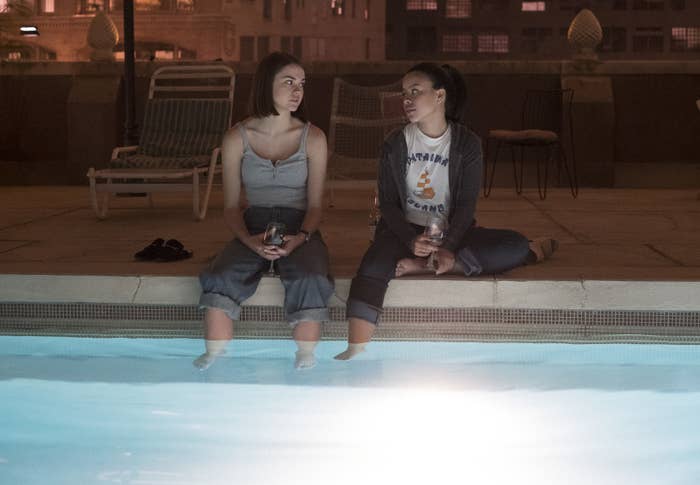
When Cierra Ramirez and Maia Mitchell started on The Fosters in 2013, they were 18 and 20, respectively, both playing characters in their midteens. Ramirez portrayed Mariana Adams-Foster, a Latina teen who had been adopted at a young age by Lena Adams (Sherri Saum) and Stef Foster (Teri Polo) after being neglected by a birth mother (Alexandra Barreto) with drug problems. Mitchell played Callie Jacob, a cynical and traumatized teen girl who’d recently been thrown in juvie for beating up a foster father who’d been abusing her brother Jude (Hayden Byerly). Over five seasons, Mariana and Callie deepened and grew as characters, evolving from troubled adolescents into confident adults. Ramirez and Mitchell grew, too, from young actors whose plotlines and fates on The Fosters were completely out of their hands — to executive producers helping steer a brand-new spinoff developed around their two characters.
The Fosters came to an end in 2018, but with Good Trouble — which airs its second episode Jan. 15 on Freeform — Ramirez and Mitchell are taking more ownership over the characters than ever before. “That was really important to us,” Mitchell told BuzzFeed News. “Jumping onto something from the start, we really wanted to be able to have our spin on it, especially because we are the ages of Callie and Mariana now.” (their characters are around 23 and 22, respectively; Mitchell is 25 and Ramirez is 23.)
Where The Fosters was a mashup of family and teen melodrama, Good Trouble is an adult dramedy all about the sex lives and career stumbles of a group of twentysomethings, centered especially on Callie and Mariana. “Storywise and just tonewise, it’s a lot different than The Fosters,” Ramirez said. “It’s a lot edgier, and it’s got a lot more comedic moments.”
What if Girls were about people who were good inside, and had a mostly nonwhite cast?
Mitchell said that she and Ramirez had a lot of input in the season: “We got to rewrite scripts, and we’re in a lot of creative meetings and concept meetings.” Ramirez added that The Fosters was the perfect training ground, not just as actors but as producers. “I grew up with all of the executives [on The Fosters]. I’d sit [on set] for all those years, listening in, eavesdropping on all their conversations to try to get the best education that I could get,” Ramirez said.
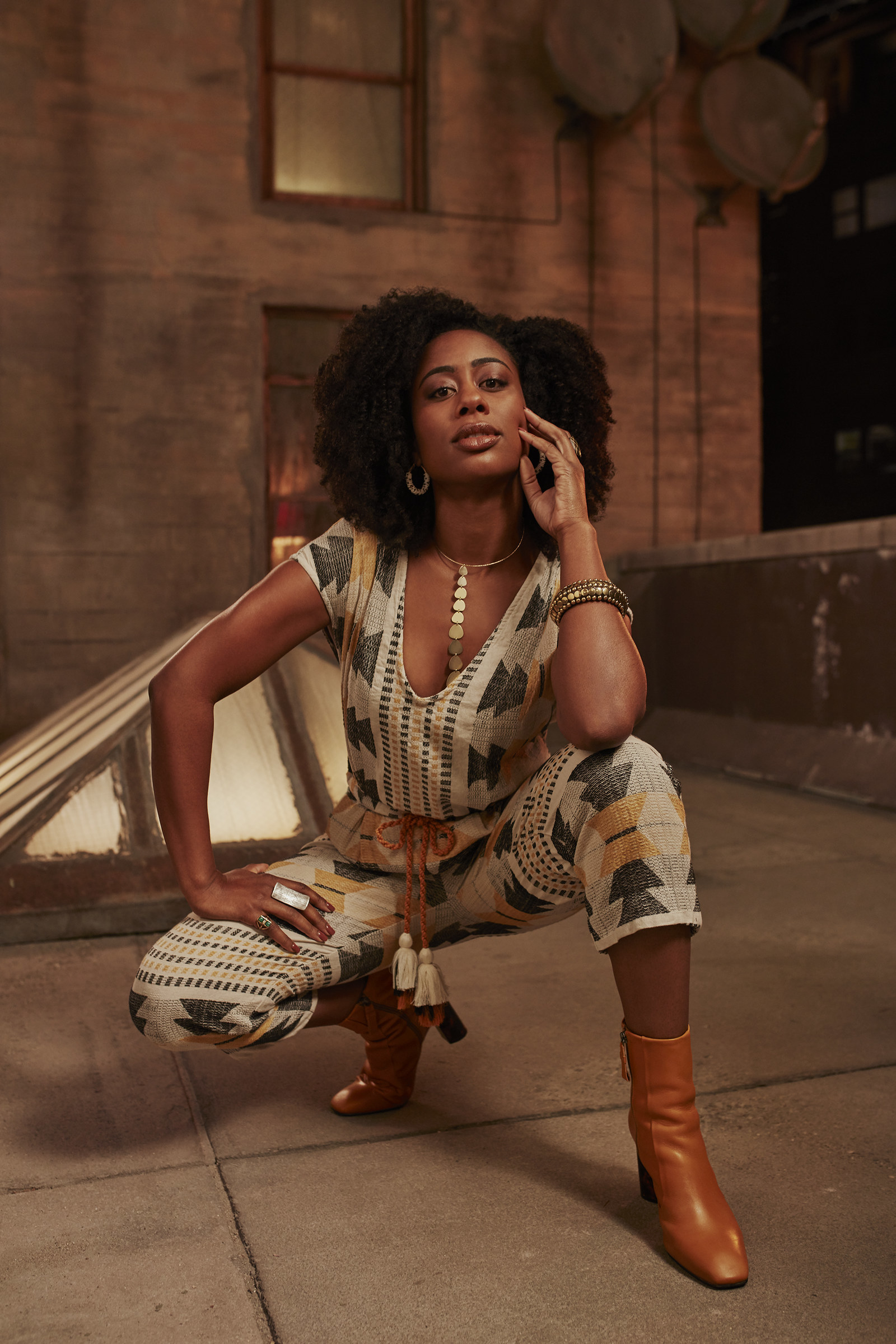
Good Trouble follows Callie and Mariana as recent college grads who move to Los Angeles to start their careers. They move into a shared living space called the Coterie, which is filled not only with communal bathrooms but also with many beautiful twentysomethings of an array of ethnicities, body shapes, and sexual orientations. The show is funny, a little tawdry, dramatic, and feels like something wholly separate from The Fosters even as it builds on the strong foundation that that show provided. You don’t have to have watched The Fosters to get a kick out of Good Trouble. All you need is to like an idea that essentially boils down to: What if Girls were about people who were good inside, and had a mostly nonwhite cast? It’s more The Bold Type than The Fosters.
During its tenure on ABC Family and then Freeform, The Fosters was known as a show with a bleeding heart. The series constantly cycled through politically relevant plotlines that bloomed naturally through their characters. That show centered not only on Callie and her integration into the Adams Foster family, but also on Stef and Lena, that family’s lesbian mothers, and their four other children. “What I loved most about The Fosters was all the representation on the show, and how relevant the topics that we were talking about were,” Mitchell said. It was crucial to Mitchell, Ramirez, and Good Trouble’s other executive producers — including The Fosters’ bosses Bradley Bredeweg, Peter Paige, and Joanna Johnson — that the spinoff carry that legacy. “We want to continue to push boundaries,” Ramirez said, “and give voices to people.”
On The Fosters, the writers put Callie through the wringer with traumas that ranged from sexual assault to abuse in the foster system. By the end of the show, Callie had become a champion against the injustices she witnessed not only in her life but in the lives of others, and she enrolled in a five-year law program to fight the power. As Good Trouble picks up, Callie has finished the program and is starting a job as a clerk for an old-school conservative judge (Roger Bart). She hopes that she can be a progressive influence on him, but as Mitchell said, “many things don’t go her way.”
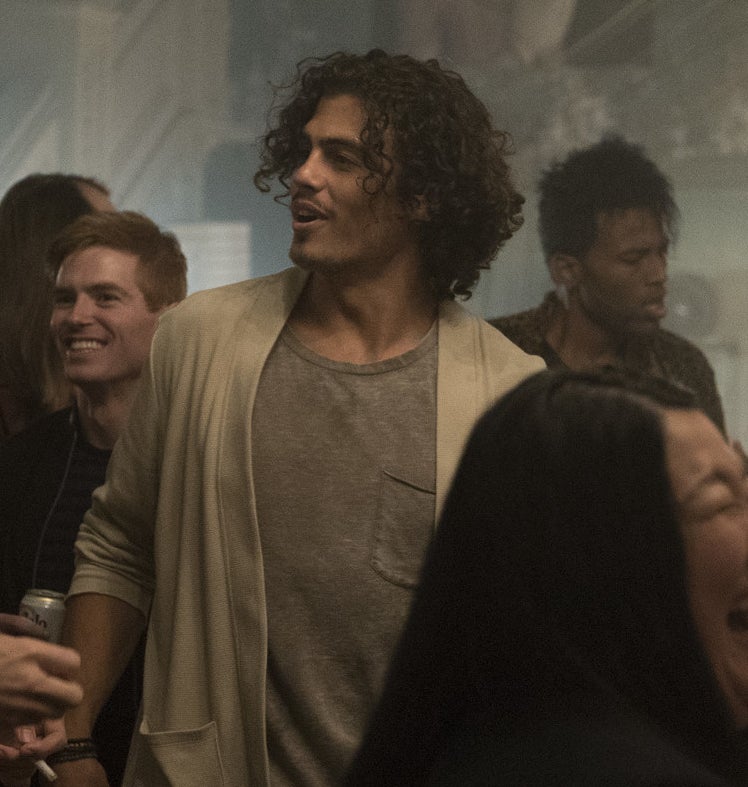
In Good Trouble’s first season, Callie and Mariana struggle to adjust to their new adult lives. Callie is picked to be the main clerk working a high-profile police brutality case for which one of her loft roommates — Zuri Adele’s Malika — is doing advocacy work, causing a web of ethical issues. “Callie’s definitely not going to catch a break, but she’s going to keep fighting,” Mitchell said. “She’s ready to get out there and be fearless in a way that she wasn’t when she was growing up.”
In the first five episodes, Callie is often spiraling about some intense work conflict, but she and the audience find relief in her budding sexual relationship with a bisexual man named Gael (the incredibly hot Tommy Martinez) who also lives in the Coterie. “Bisexual men are very unrepresented in media and television and film, so that’s something we’re really excited about,” Mitchell said. Good Trouble gives in to portraying him stereotypically for about half of the second episode, as Callie reels after finding out that her new lover also sleeps with men. After that, though, the portrayal evens out and becomes more thoughtful.
Mariana, meanwhile, starts Good Trouble with a new job at a tech company, only to become quickly discouraged by the white dudebro culture prevalent in her workplace. In The Fosters, Mariana was always a passionate, intelligent, and bubbly force, grappling in her adolescence with her relationship to her Latina identity, and resentment toward her birth mother for the latter’s shortcomings in raising her and her twin brother Jesus (Noah Centineo, who will be making an appearance on Good Trouble).
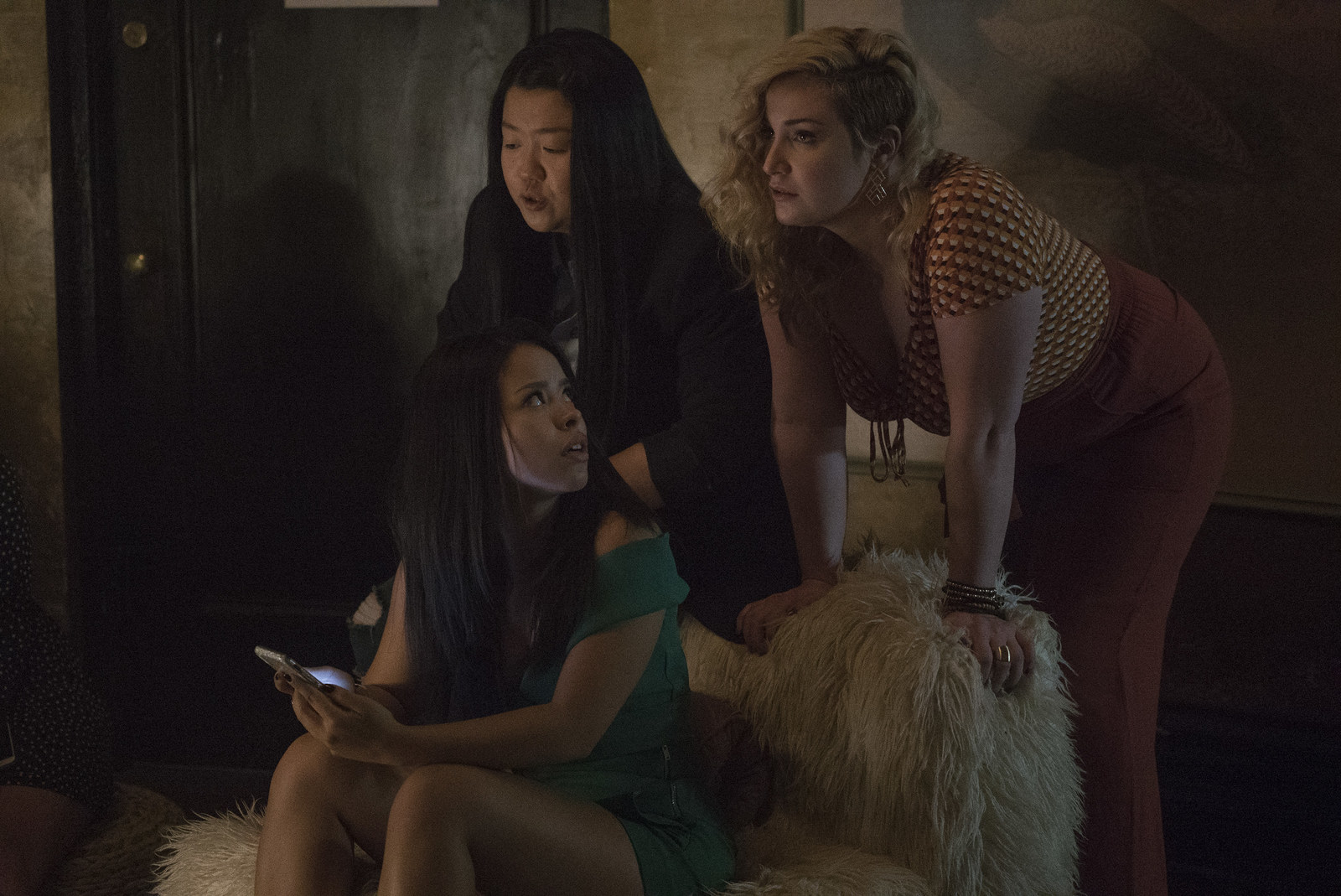
As Ramirez said of her character, “Mariana is all about making things right, and when she knows that something isn’t, she’ll do everything in her power to change it.” Good Trouble challenges those instincts by placing her in an environment that punishes any full expression of who she is. She’s told it’ll hurt her career if she keeps wearing dresses to work; her boss mocks his employees’ ethnicities and genders; and everyone seems out to steal her ideas. Mariana’s career arc in the first five episodes involves a lot of debate over how and when to speak up if it may cost you your job.
Callie and Mariana’s long history as sisters also informs the series in a really organic, dynamic way. The chemistry between Mitchell and Ramirez is well-documented after five seasons of The Fosters, so on Good Trouble their relationship feels lived-in whether they’re bickering or bonding — and there’s plenty of both. They feel like real siblings. Callie and Mariana don’t have to prove that they love each other; you can just sense it in the way they are around each other, no big monologues necessary.
For the audience who never watched The Fosters, the show is welcoming, balancing sauciness, sexiness, levity, and emotional weight with deft hands. But old fans of The Fosters are rewarded, too — it’s nice to be able to follow two beloved characters and their actors on to the next chapter of their lives, and the first season of Good Trouble demonstrates a commitment to working in guest spots for the entire main cast of The Fosters. Both groups of viewers will benefit from the years of work and layers of complexity that are already built into Callie and Mariana’s history. “I feel like I grew up with Mariana and I learned so much from her,” Ramirez said, “and I’m continuing to learn from her, in life. She’s having a hard time, it’s not easy.” Mitchell echoed the sentiment when talking about Callie. That Good Trouble’s two main characters already feel lived-in and real also leaves more room for the writers to introduce the rest of the ensemble cast and the interwoven relationships that drive the series.
Though they have five seasons of writing already behind them and plenty of conflicts ahead, Callie and Mariana genuinely do feel like they are getting new starts through Good Trouble. Though Callie and Mariana’s dramatic past will certainly inform the spinoff, the show’s lighter tone is refreshing after so many seasons of melodrama. Good Trouble is also, at its heart, an ode to those at the border between millennials and Gen Z — to those burgeoning adults who grew up socially conscious and striving to make their world better than the one they were born into. That’s true of the entire ensemble, but especially Callie and Mariana, whose origins lie in a show that made empathy its mission statement. Good Trouble promises to do the same — just with a lot more laughs, and a lot more sex.
